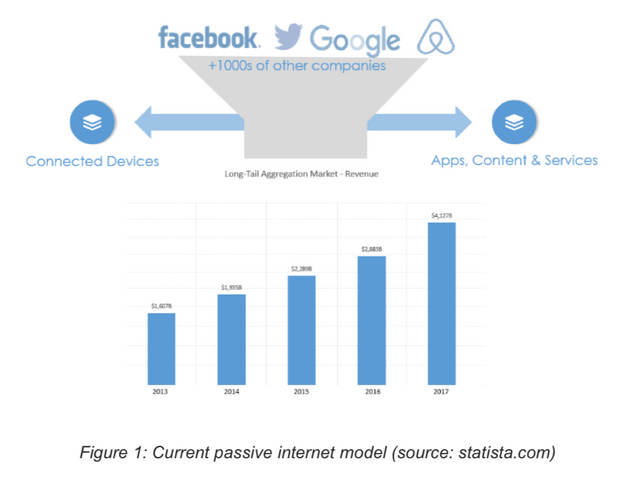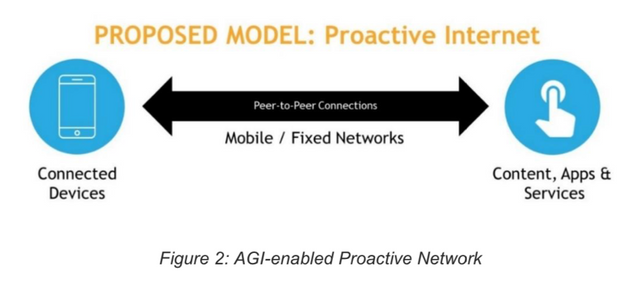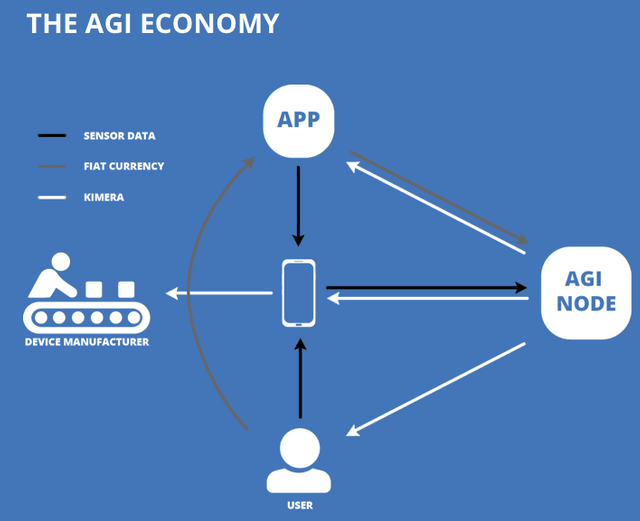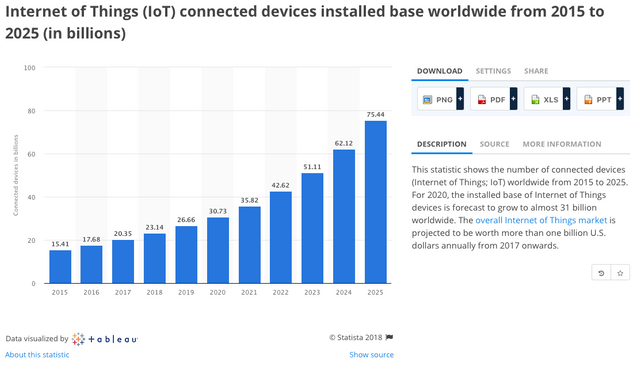Kimera AGI - Building a Fairer Economic Model for Global Interconnectivity
Did you know that as at 22 May 2018, the Google Play Supported Devices list runs to 615 pages? That’s right, 615 pages! This includes well-known manufacturers such as Vodafone, Toshiba, Sony, Samsung and Panasonic, along with a multitude of other high-profile and little-known brands from around the world. (https://docs.google.com/spreadsheets/d/16gXm7mGsXY_wQjTsRJYQVKkIjR8c3v-MAliAiRs0E3c/pub?gid=0&single=true&output=pdf)
Most of these brands innovate, design, manufacture and then sell their devices, but after the sale, their income stream is finished. Firmware upgrades are free, and except for replacement screens, there’s not much ongoing revenue returning to the device manufacturers.
Once a device is sold, all of the subsequent revenue opportunities (generated via additional apps and other add-ons purchased for the device) are transacted via the Google Play Store.
Conversely, Google receives a tidy commission from each sale that goes through their Play Store. They are simply a conduit for app developers to sell their wares - they’re middlemen, not necessarily contributing to the innovation of the devices themselves, nor to the apps subsequently being used upon them. If we were talking about property development instead of apps, they’re the equivalent of a real estate agent. They take their cut for facilitating the sales.
Google is just one of thousands of middlemen companies that facilitate and utilise this commission-based economic model via the internet. This current model is passive in nature, where users locate and pay for the apps or services they want via the middlemen. In 2017 alone, these “internet middlemen” collectively earned over US$4 trillion.

But what if there was a way to eliminate these middlemen and allow the manufacturers to continue receiving an ongoing trickle of commission income from their devices for the entire life of the product, while at the same time providing a better return to the app developers and better value for the buyers? What if the phones themselves generated ongoing income because of the technology embedded within them?
The team at Kimera Systems believe this is not only possible, but is a fundamental necessity to building a fairer economic model for our future, not only for the device manufacturers, but also the telecommunication networks that provide the global internet capacity for all these devices, along with the app developers and end-users themselves (people just like you and me). It would mean that the US$4 trillion dollars those middlemen earned would be redistributed between these pro-active peer-to-peer (P2P) connected components of the economy.

Kimera have built what they claim is a first generation Artificial General Intelligence (AGI) technology based on a cause-effect physics algorithm, as opposed to the more conventional ‘neural networks’ technology used by Google’s DeepMind and other similar projects. Unlike the neural networks-based AGI model, Kimera’s AGI, codenamed “Nigel” after former co-founder Nigel Deighton, needs to be raised, in much the same way a child needs to be raised.
Kimera are hoping to have the Nigel AGI reading and writing at a grade-school level by 2019, and once it reaches a certain intelligence threshold, it will be capable of proactively figuring out what app or service it’s user requires, locate it, and get it from the provider using P2P connections, all without the need to use any middleman to facilitate the purchase. The end user will still need to buy the app (if it isn't free), but there won't be a middleman taking a significant share of the sale price.
Under this new economic model, with the Nigel AGI operating as a collective intelligence, all devices and networks will function cooperatively. And, that money, in excess of US$4 Trillion, normally taken as a commission by the middlemen will be redistributed between:
- device manufacturers
- software providers
- service providers
- network operators
- users
- everyone (& everything) producing sensor data that helps the Nigel AGI to continue learning.
The final dot-point above is quite significant and deserves further explanation.
To assist with the learning process, Kimera Systems needs thousands (ideally, million or billions) of users “feeding” data into Nigel. The more data Nigel receives, the faster it will learn. To incentivise people to help with the education of the Nigel AGI, Kimera have created an economic model that includes paying people tokens simply for going about their daily lives and allowing the Nigel AGI access to the sensor data on their mobile devices. The more data a person provides, the more tokens they earn.
This ‘monetized living’ model will provide a constant stream of sensor data for Nigel, which will allow it to better understand our needs and goals. The very essence of the Nigel AGI is to not only understand our goals, but to help us achieve them - proactively.

By embedding Nigel AGI into devices, manufacturers will also receive token payments for facilitating the provision of data, as will the communication networks who transmit the data. This innovative model was developed after years of consultation with the telecommunications industry. In 2014, it also resulted in Kimera Systems receiving a nomination for The San Andreas Award for Most Disruptive Technology by the Telecom Council (http://blog.telecomcouncil.com/blog/6th-annual-spiffy-awards-at-tc3-2013/).
The devices capable of providing sensor data aren’t simply limited to the phone and tablet-style communication devices referenced above, but also includes Internet of Things (IoT) devices, which are predicted to number in excess of 75 billion devices by 2025 (https://www.statista.com/statistics/471264/iot-number-of-connected-devices-worldwide/)

Household electronics manufacturers, vehicle manufacturers, basically any electronic device could monetise their products by embedding Nigel and getting token payments for the data provided.
Personally, I’m looking forward to installing the Nigel AGI Agent onto my Raspberry Pis and connecting an array of environmental sensors, all of which will provide streams of sensor data back to the Nigel AGI and help it learn, which will mean I get paid in tokens for all the data provided.
As you can see, by incentivising and monetising the adoption of the Nigel AGI ecosystem, it certainly could revolutionise and overturn the current ‘middleman’ economy and replace it with a fairer system for all active participants.
The Kimera Systems White Paper provide far greater detail on the Tokenomics and other aspects of the project - https://kimera.ai/wp-content/uploads/2018/04/Kimera-Whitepaper-3.pdf
Kimera are also planning to be the most transparent ICO ever conducted, and to facilitate this openness, they’re recording a Documentary Series that can be found at https://www.youtube.com/user/KimeraSystemsChannel.
Additional links to partnerships, the team, advisors and complete token sale information can be found on their website: https://kimera.ai
I am not a financial analyst. The above information should not be construed as financial advice and is not intended as financial advice. Always do your own research before investing in anything. The price of tokens may be volatile once listed on any exchange, and purchasing cryptocurrencies can be a high risk activity.
If you’re looking for other article reviews by this author, please check out this Telegram channel https://t.me/aussiesloth_ico
Proof of article ownership - ETH address: 0xcE497066921f8aE00d1128d8B9cA105f025DF210

Hi, thank you for contributing to Steemit!
I upvoted and followed you; follow back and we can help each other succeed :)
P.S.: My Recent Post